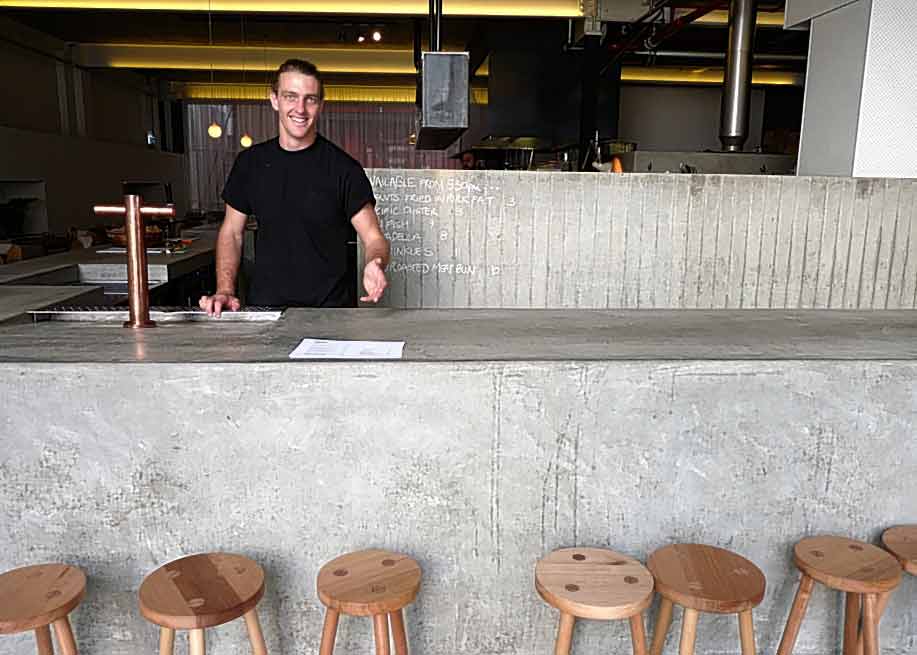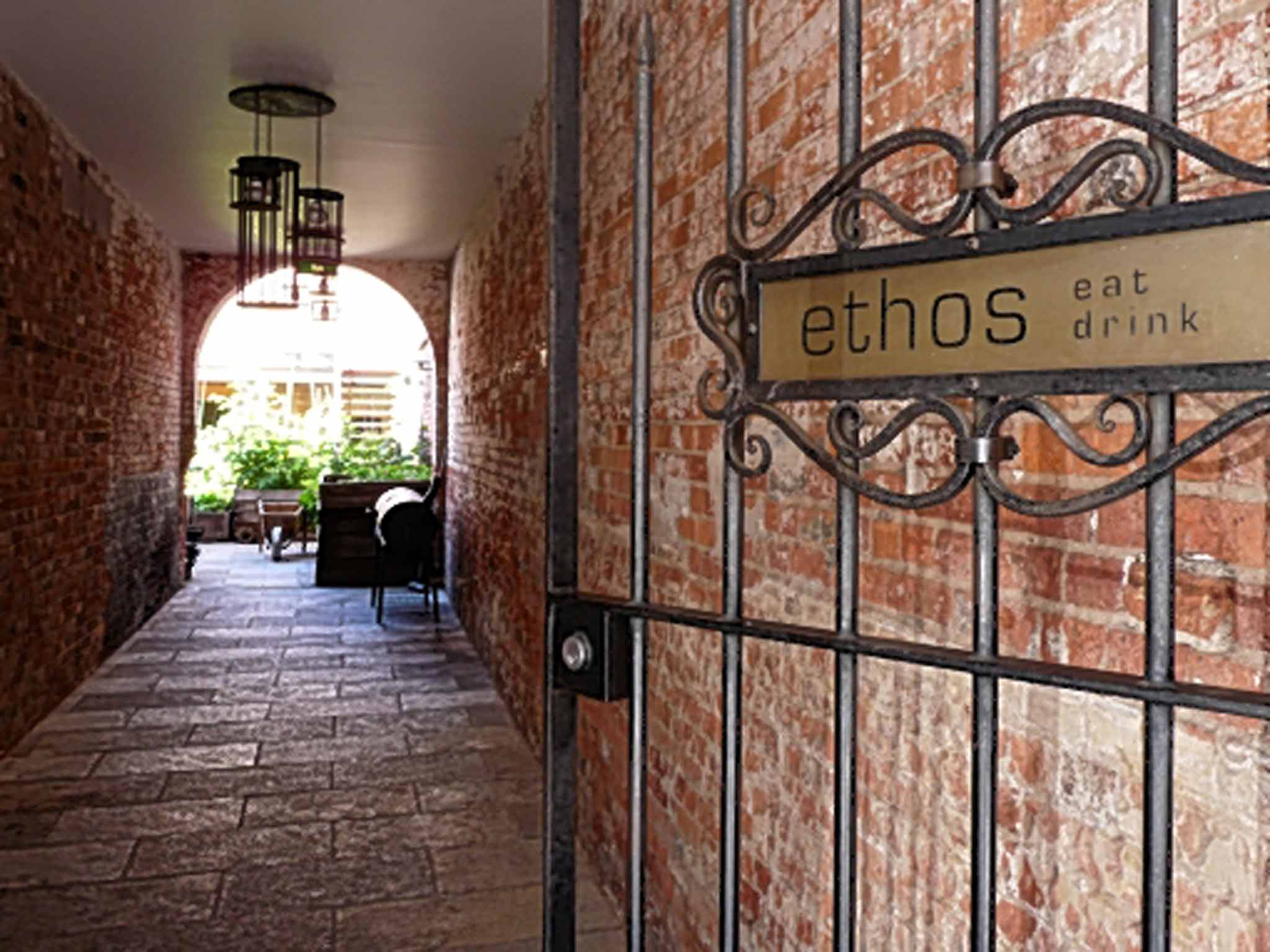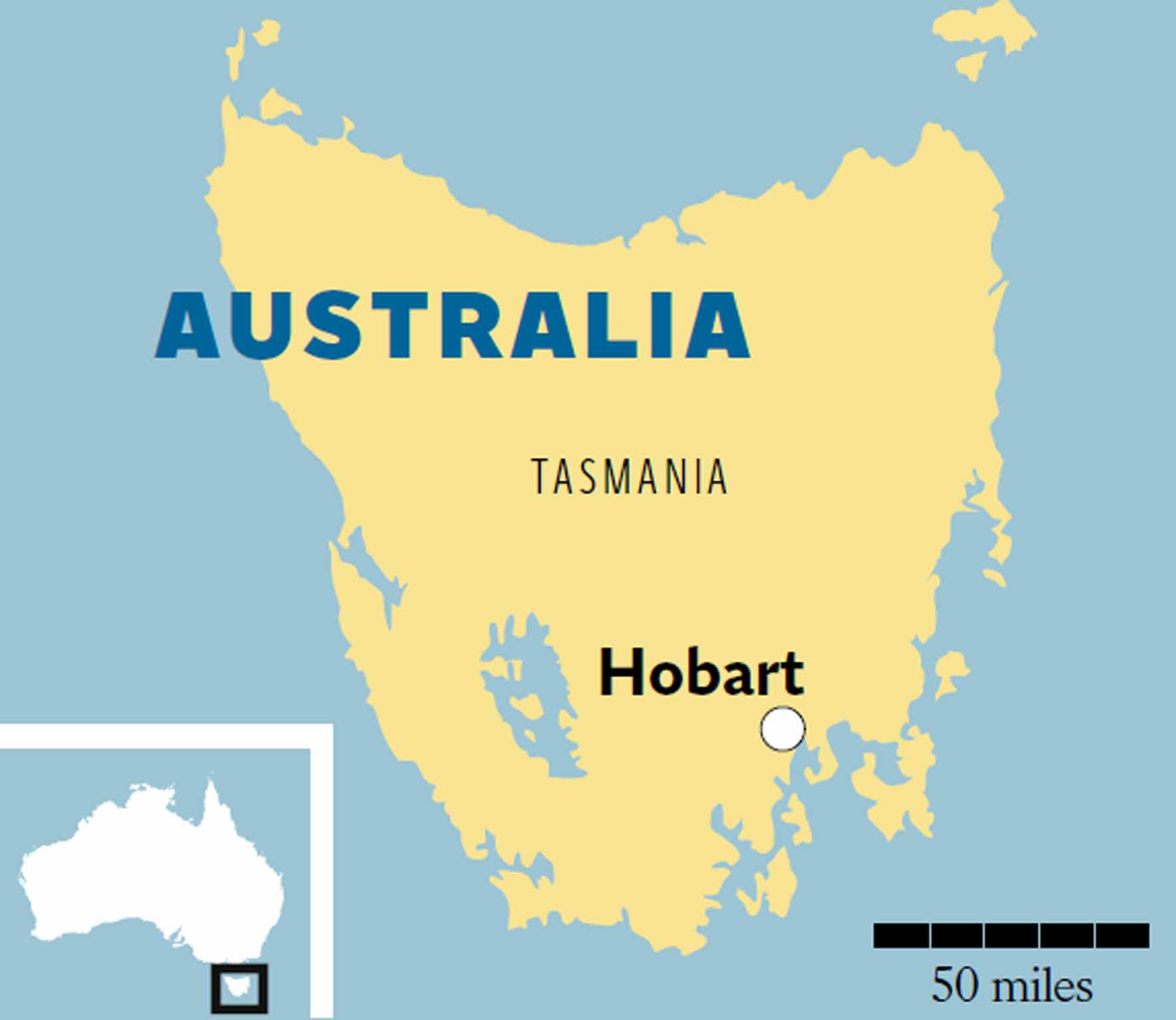The Independent's journalism is supported by our readers. When you purchase through links on our site, we may earn commission.
Tasmania's gourmet scene: Creative chefs are turning Hobart's industrial spaces into dining destinations
Hobart has always had access to outstanding produce and big-name chefs have been championing Tasmanian ingredients

Soggy meat pie. That's what I'd expect from a meal in a garage in Hobart, Tasmania. And Westend Pumphouse's concrete floor and corrugated plastic roof do little to dispel the notion. So, I'm surprised when Mary McNeill scans the menu and a plate of roast swede with leek broth and kale arrives.
This is a stop on Mary's food tour of Hobart. A former chef who has worked in Melbourne and New York, she's been like a proud mum as we've sipped local cider as crisp as cava and tasted the cheese of a farmer who has 18 cows and a shipping container for a dairy. (Very Tasmanian, that, Mary says: “We love our small producers in Tassie.”)
Hobart gastronomy was once so limited Mary says she couldn't wait to leave. “Now this is such an exciting city for a chef. Sometimes I can't believe the quality.” And if that just sounds like local pride, consider this: when the Australian government staged a multimillion-dollar event to showcase Australian cuisine last year, it chose the Tasmanian capital as the venue. Not bad for a city that existed somewhere between national embarrassment and national joke when I first visited 18 years ago.
Back then, Hobart was a backwater and an economic basket case; a capital stuck in yesteryear as others raced into a high-rise future. Yet recently mainlanders, as Tasmanians call them, have begun to wonder whether the joke was on them.
The opening of Hobart's Museum of Old and New Art (Mona) in 2011 made Australians notice there was more to Hobart than small-town charm. In 2013, Gourmet Traveller named the Mona as Australia's premier cultural sight, and Tasmania was Australia's best weekend break. Gradually accommodation and food have raised their game to cater for a growing number of visitors. Entrepreneurs have arrived in droves, and Hobart hasn't so much grown up as grown younger and more creative.

Hobart has always had access to outstanding produce. Its rural hinterland is watered by the world's purest rain. The clean seas yield superb fish, lobster, oysters and 25 per cent of the world's wild abalone. Big-name chefs have been championing Tasmanian ingredients for a decade. Now young chefs in Hobart are too, and because they're priced out of traditional restaurant areas such as Salamanca Place and Battery Point, they are bringing new life to dead industrial space.
Luke Burgess, a former Noma employee, blazed the trail in 2010 with Garagistes in an abandoned mechanic's. It closed in April this year but not before critics ranked it among Australia's top 25 restaurants. “Everyone thought Luke was crazy,” Mary says, “then everyone came.”
My first stop is Franklin. If any venture has filled the space left by Garagistes it's this. It opened last December in a refurbished Art Deco garage and has cow-hide rugs, polished concrete floor, and a central wood-burning oven, yet this place would fit right into Sydney, New York or London. The short menu is a Tasmanian take on New Nordic. My striped trumpeter fish cured in seaweed and urchin is a perfect balance of freshness and brine. Wood-roasted whole pigeon (still with its claws) dissolves with the earthy flavours of game and woodland. It's complex but honest – new-look Hobart in a nutshell.
Cheaper rent means no corporate bankroll, no investors to please, and more opportunity for a restaurant with personality. You don't get the chance to have a space like this in Melbourne or Sydney, explains chef and owner David Moyle. “The overheads there are so high every seat has a dollar figure. You end up treating people like cattle or following fads to get bums on seats. Why would you want to do that?”
Next evening, at Willing Bros, another recent launch on a buzzing strip of North Hobart, we sit on bar stools and tuck into sharing plates of spiced lamb and local ocean trout cured in beetroot and gin – all local ingredients, even the gin. We'd have sat in the restaurant if it wasn't packed.
Yet the venue that exemplifies Hobart's food revolution is Ethos, in the city centre on the site of an old convict-era stables, its courtyard forested with herbs and vegetables, its interior all pared-back rustic-chic with solar power and recycling. The six-course menu is curated daily from what's freshest. For us, that means entrées such as blue mackerel and tigerlily capers, and gutsy plates of pork with broccoli, cauliflower, daikon and black radish. “We want to use the really small suppliers who can give us just one box of fantastic produce,” says chef-owner Iain Todd. “Ethics and sustainability are about more than recycling. They're also about community. We work hard to support the small growers who supply us,” Iain explains.
Hobart is a reminder that restaurants don't have to be about food concepts or famous chefs. I leave, rethinking how I usually eat. You can't ask more of a backwater than that.

Getting there
Singapore Airlines (0844 800 2380; singaporeair.com) to Melbourne from London and Manchester, and on to Hobart with partner Virgin Australia.
Staying there
Tasmanian Odyssey (01534 735449; tasmanianodyssey.com) has five nights in Hobart, with car hire and accommodation from £435pp, excluding flights.
Eating there
Mary McNeill runs Gourmania food tours (gourmaniafoodtours.com.au) from $75pp (£36).
More information
Join our commenting forum
Join thought-provoking conversations, follow other Independent readers and see their replies
Comments